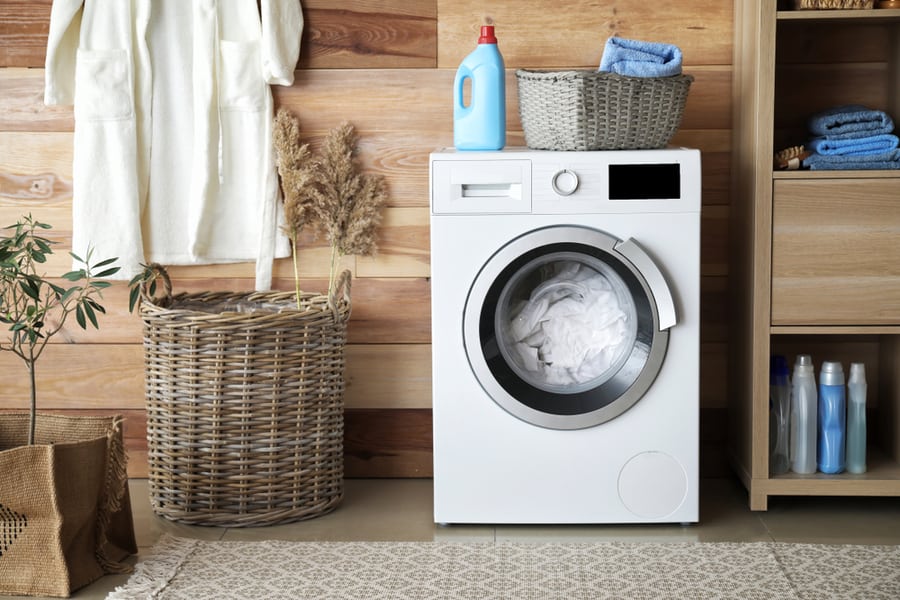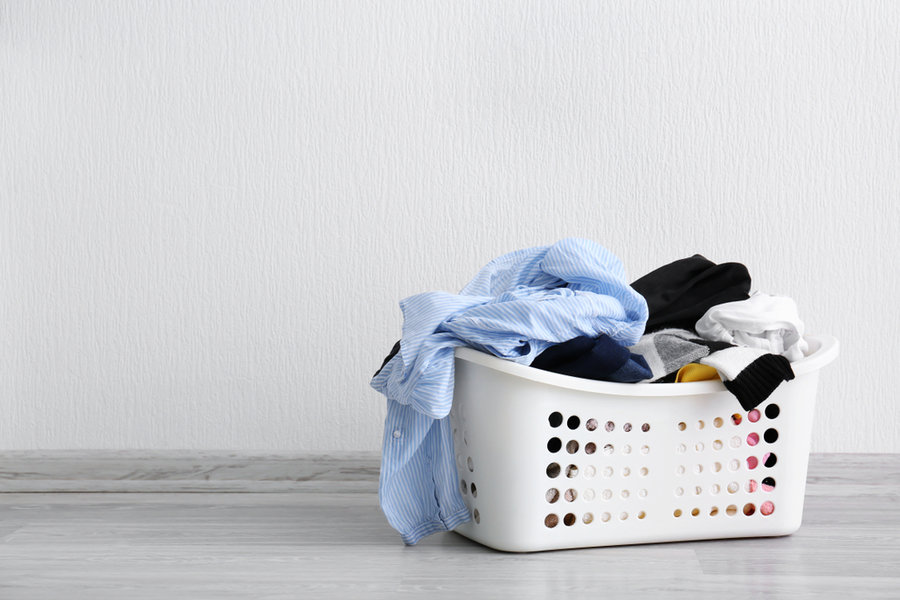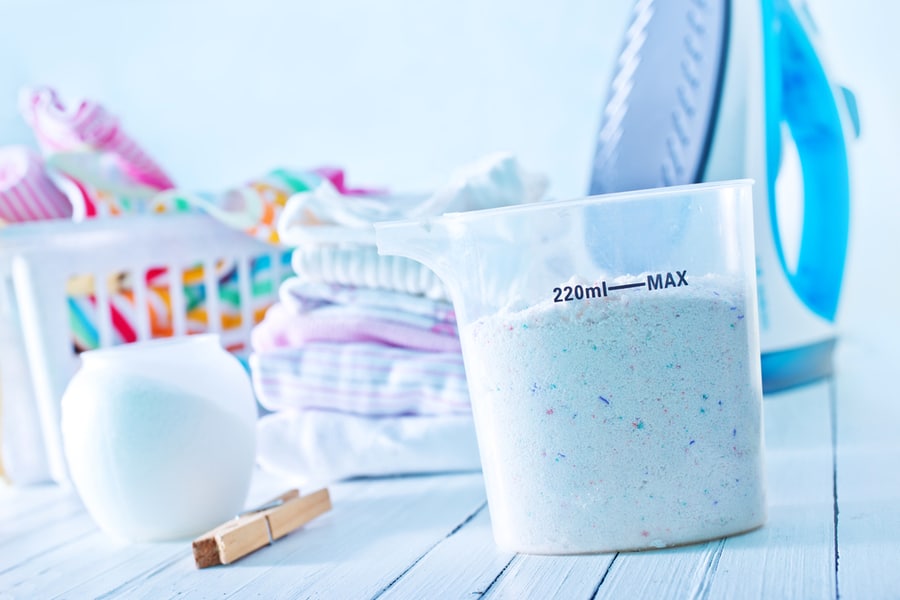
Knowing its capacity is crucial to consider when having a new washing machine for your home or already having one in operation.
For a new acquisition, you don’t want to settle for too small of a load capacity; for an already existing one, you want to avoid overloading – or underloading – it. That’s where the washing machine capacity and load size guide come in!
If buying a new machine, you can find the machine’s capacity in the product manual or the product label. However, if you already have the washing machine but don’t have access to the manual it came with, a simple way to determine your machine’s capacity is to use the formula;
Volume (cubic feet) = π(r∧2)H
where:
π = 22/7, r is the radius (in feet), and H is the height or depth of the washer’s tab (in feet).
Once you get the volume in cubic feet, use the Washer Size To Load Size Conversion Chart to determine the weight of clothes your washer can handle!
I know it already sounds like a math class, right? But trust me, if you follow this guide closely, you’ll find calculating the capacity of your washer will become child’s play. In addition, I’ll answer common washer-related questions and provide 5 handy tips when loading your laundry appliance. So, besides getting your calculator ready, get ready for some pro tips!
Knowing Your Machines Load Capacity Is Essential

When shopping for a washing machine, there are a few things to guide you. And for an average homeowner, the most fundamental aspect is obvious – the price! But the price is just one of the things to consider when getting a new washing machine.
Once you have the money aspect factored in, you next want to pay attention to the machine’s capacity! The choice of machine capacity will determine how long you must wait in the laundry, how much you will pay for water and energy costs, and even the quality of your washed clothes.
Of course, those are just a few aspects that get affected by the machine’s capacity. We’ve got more, so make sure you get the size decision right!
How To Determine the Size of a Washing Machine

Information on the machine’s capacity is easy to get at the time of purchase. You can check the product specifications or the manual. Usually, the manufacturers express the machine’s capacity in kilograms (kg) or pounds (lb).
But if you can’t see anything in kilograms or pounds, don’t worry! Check to see if there’s anything expressed in cubic feet (cu. ft.). If there is, then that’s what you need! It’s the capacity of the machine.
It’s not a very common way of expressing a washer’s capacity. However, it’s still among the possibilities manufacturers use to tell you how many loads a washer can carry. So, pay attention to any information expressed in cubic feet.
Suppose you have a washing machine but can’t access any manufacturer’s information. What’s next? Well, don’t worry! You can still determine the load capacity of your appliance even without any documentation! And yes, you won’t need to dial the manufacturer’s number.
Instead, you need to calculate the volume of your machine using the formula:
π(r∧2)H
Where:
‘π’ stands for Pi,
‘r’ stands for the radius of the drum,
‘∧’ means “to the power of,” and
‘H’ stands for the height or depth of the drum.
For example, let’s assume that your washing machine’s diameter is 1.8 feet and the height is 2 feet.
In that case:
π = 22/7 (constant)
r = 0.9 feet (Diameter/2)
H = 2
Let’s insert these values in the formula.
π(0.9∧2) x (2) = 22/7 X 0.81 X 2 = 5.092 cu. ft.
So, the machine’s capacity is 5.092 cubic feet.
But now the question comes – how do you convert cubic feet into kilos (kg) or pounds (lb)? After all, you can’t measure your load in cubic feet.
Again, it’s simple!
And here, you won’t even need your calculator!
Here’s a conversion chart to help you:
| Machine Volume (Cu. ft.) | Machine Type | Ideal Load Capacity In Pounds (lbs.) | Ideal Load Capacity In Kilograms(kgs.) |
| 1.5 to 3.4 | Compact | 4 to 8 | 1.8 to 3.6 |
| 3.4 to 4.4 | Standard | 8 to 16 | 3.6 to 7.3 |
| 4.5 to 5.0 | Large | 16 to 20 | 7.3 to 9.1 |
| 5.1 to 6.2 | Extra large | 20 to 25 | 9.1 to 11.3 |
Let’s see where our washer would fit using the table provided.
From our calculations, we found its volume to be 5.092 cubic feet.
That’s about 5.1 rounded off to the next tenth cubic feet.
So, a single load should weigh between 20 and 25 pounds or 9.1 to 11.3 pounds.
How To Determine the Weight of Your Laundry

The kilograms you see on your washer’s label don’t represent the machine’s weight.
Not at all!
Instead, as already stated, manufacturers usually use kilograms to provide information on the washer’s capacity. In other words, the kilograms there represent the ideal load size for your washer!
That’s to say, you have to know the approximate weight of your laundry so you don’t overload it.
Now, you can determine the weight of your laundry in several ways. The obvious one is to measure your weight when carrying the load and subtract your weight when you are empty. That will leave you with the load’s weight and is an accurate way to know the weight of your laundry.
But let’s be honest!
Sometimes, we don’t want the hassle of stepping on the weighing scale every time we do laundry. Plus, some of us want something that won’t remind us how many pounds we’ve put on after the holidays. And thankfully, we’ve got other ways to measure the weight of your laundry!
The first method is to use a basket.
Weigh the empty basket, load up the clothes you want to wash, and weigh the filled-up basket again. Then, subtract the empty basket’s weight from the filled-up one. That will give you the approximate weight of your laundry.
Simple!
If you want to avoid using scales altogether, the second alternative way of measuring the weight of your laundry.
Here’s a rough guide to estimate the weight of your clothing:
| Laundry Type | Weight In Kilograms | Weight In Pounds |
| L T-shirt | 0.2 | 0.44 |
| XL Size Shirt | 0.2 | 0.5 |
| Medium Sweatshirt | 0.4 | 0.9 |
| Medium Blue Jeans | 0.7 | 1.6 |
| A Full-Size Bed Sheet | 0.6 | 1.3 |
| Large Bath Towel/Beach Towel | 0.7 | 1.6 |
| Single Duvet | 6 | 13.66 |
| Double Duvet | 7 | 15.4 |
| Queen Size Duvet | 8 | 17.6 |
| Medium King Size Duvet | 9 | 19.8 |
| Heavy King Duvet | 10 | 22 |
But then, this is just a weight estimate and not necessarily the exact weight of your laundry.
Even with the same type of clothing, the weight can vary depending on brands, sizes, and the material used. As such, use this guide as a reference and not the actual weight of your load.
5 Essential Tips When Loading Your Washer
Knowing the ideal load size isn’t just enough; you must learn how to load the washer correctly.
Here are 5 essential tips when loading your washing machine:
1. Inspect All the Pockets Before Doing Laundry

It’s very easy to miss out on items left in the pockets. To avoid this, check all the pockets before loading clothes into the machine. You don’t want to regret forgetting to remove your electronic car keys from your pockets!
If you accidentally put small gadgets like electronic car keys inside your washing machine, avoid using the device when it’s still wet. That would cause further damage. Instead, bury it in a bowl of uncooked rice for 12 to 24 hours to absorb the moisture before using it.
2. Take Time To Prepare Your Laundry for Washing

Every piece of clothing has its washing requirements. That’s why you must take time to prepare your laundry for washing, so they are ready to go into the machine.
Here are some things you need to do:
- Zip up all zippers and unbutton all buttons.
- Turn all pockets inside out.
- Unroll cuffs.
- Turn all fade-susceptible clothing inside out.
3. Follow the Correct Order

When loading the washer, you need to follow a specific order. You must do this right. You can find instructions in the manual for each washing machine, so check your manual to know what needs to come after what.
For most machines, it will be the detergent that will come first, laundry items second, and water!
4. Avoid Overloading the Washer

Sometimes it can be tempting to try and create space for that remaining pair of jeans, but that could cost you. Overloading the washer can cause many problems, from not delivering an effective wash to breaking the washer.
So, even if it means running two loads of laundry instead of one, stick within the recommended load size. And as a general rule of thumb, keep the unit up to 3/4 full. If using a front-load machine, don’t get past the last row of holes next to the door!
Sticking to the correct load size will ensure that your clothes have enough space to move around and get a good clean.
5. More Detergent Isn’t Always Better!

More detergent doesn’t always mean a better wash. If you use too much detergent, it will create an excessive amount of suds and foam, which can cause many issues.
Ideally, avoid surpassing the fill line of the detergent chamber. And if your clothes seem dull and have soap residue after washing, try using a bit less detergent.
Conclusion
Understanding your washer’s capacity will help you stick to the correct load size when it’s time to do laundry. Thankfully, finding your washer’s capacity is easy even when you don’t have the manual.
But also, remember to learn the proper way of loading your machine. That would ensure you get a good and effective wash every time. Remember that load size is just one of the many factors determining successful laundry results.
Frequently Asked Questions
What Size Washer Do I Need for a Family of 4?
The ideal size of a washer for a family of four is about 4.5 cubic feet or larger. However, before deciding on the size, you should also consider the type of washer, how frequently you wash clothes, and other factors.
Is the Washer’s Weight Capacity in Kilograms for Dry or Wet Clothes?
The capacity of a washing machine is usually in kilograms and refers to the dry weight of the clothes. Of course, if the clothes are wet, they can be twice as heavy, but your washer is designed with that in mind.
What Happens if I Overload the Washer?
Overloading your washing machine can cause a lack of effective cleaning, reduce lifespan, and even cause it to break down. So make sure you always follow the manufacturer’s instructions.
It’s essential to stick to the recommended load size for your washer, as this will ensure the best results and a longer life for your washing machine.
Is There Harm in Underloading the Washer?
Yes, underfilling or underloading your washing machine can be just as bad as overloading it. An imbalance will likely occur during a spin cycle when you don’t put enough clothes in your washer. The small pile of clothes will tend to gather on one side, leaving the other too low.
Plus, using less than the recommended amount of laundry items also means you incur more costs for electricity and water. So if you’re trying to save money, it’s better to stick with the recommended load size.












